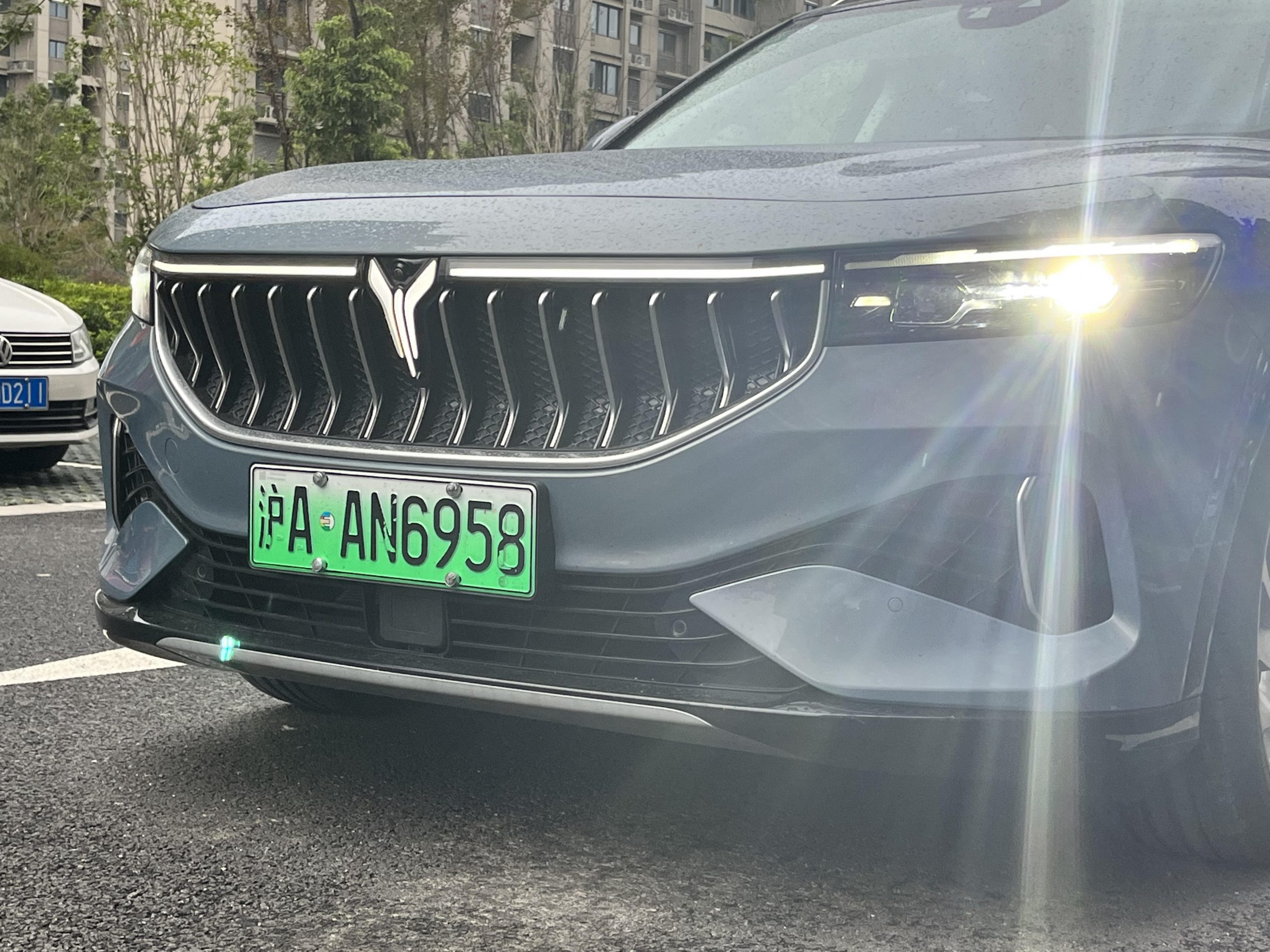The Voyah FREE has been on the market for over a year. On September 20th, the 2.0 major version update of Voyah FREE was officially launched. Based on user needs and feedback, Voyah has made a total of 141 updates in terms of scenario-based functions and driving experience. This upgrade covers snow mode, power protection mode, and in-car interface.
As early as when the Voyah FREE was first launched, I had the opportunity to test drive it shortly in Wuhan. At that time, the car’s good space and excellent chassis quality left me with a good first impression. However, many details cannot be felt in a few hours of experience. Coincidentally, after the 2.0 major version update, I finally had the opportunity to have a deep experience of the Voyah FREE during the National Day holiday.
Before discussing the experience, let’s take a look at the details of Voyah FREE’s major version update this time.
Version 2.0, 141 upgrades
Added scenario-based functions
In terms of new scenario-based functions, Voyah FREE’s OTA 2.0 added snow mode, power protection mode, and privacy mode, providing users with more specialized services.
In snow mode, the energy recovery of Voyah FREE’s sliding is adjusted to low gear, and the torque distribution ratio reaches 50:50, reducing the risk of skidding on low-adhesion road surfaces, and reducing the risk of acceleration and braking caused by large horsepower.

This updated power protection mode is for extended-range version car owners, which can preserve 25%-80% of the electricity for users. It can more accurately control the remaining power in camping and hiking scenarios and avoid the impact of excessive discharge on driving comfort.
 With the new privacy mode, Voyah FREE can now ensure personal information security with just one click. This mode can activate Baidu Map search history, favorite places, phone numbers and names, disable camera and microphone. In today’s increasingly intelligent vehicles, this feature can prevent the risk of privacy leaks.
With the new privacy mode, Voyah FREE can now ensure personal information security with just one click. This mode can activate Baidu Map search history, favorite places, phone numbers and names, disable camera and microphone. In today’s increasingly intelligent vehicles, this feature can prevent the risk of privacy leaks.

In this OTA 2.0 update, the function of synchronizing mobile Baidu search with the car has been added. By logging in with the same account, users can access the search history and increase the efficiency of using the large-screen navigation. In addition, if the user leaves the car unlocked for a long time (without pressing READY), the system will proactively send out an abnormal reminder to prevent the vehicle from being stolen.
HMI interface upgrade optimization
OTA 2.0 update has optimized the HMI interface. The adjustment of the new interface reduces the operation hierarchy. Any function in the UI vehicle controls and settings directory can be found in three steps. The logic optimization has increased the convenience of user interaction and reduced learning costs.
The home page interface application was changed from “large card stack” to “small card tiling”. Users can also long-press on a card to customize the display order of the cards. The updated home page interface can display more information at the same time. In addition, the dashboard has optimized the layout of the bottom bar and indicator lights, and also added displays for time and temperature, making it easier to read information.

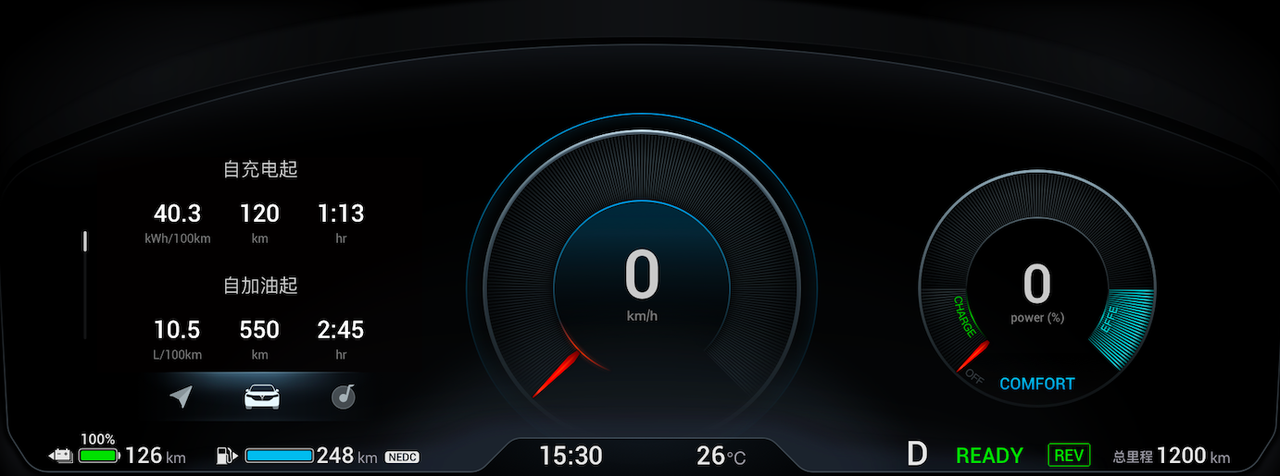
Driving experience upgradeIn terms of user experience, OTA 2.0 has added seat heating/ventilation function, and optimized fragrances, instrument navigation distance turning, low temperature SOC, music sound quality selection, and instrument warning sound.
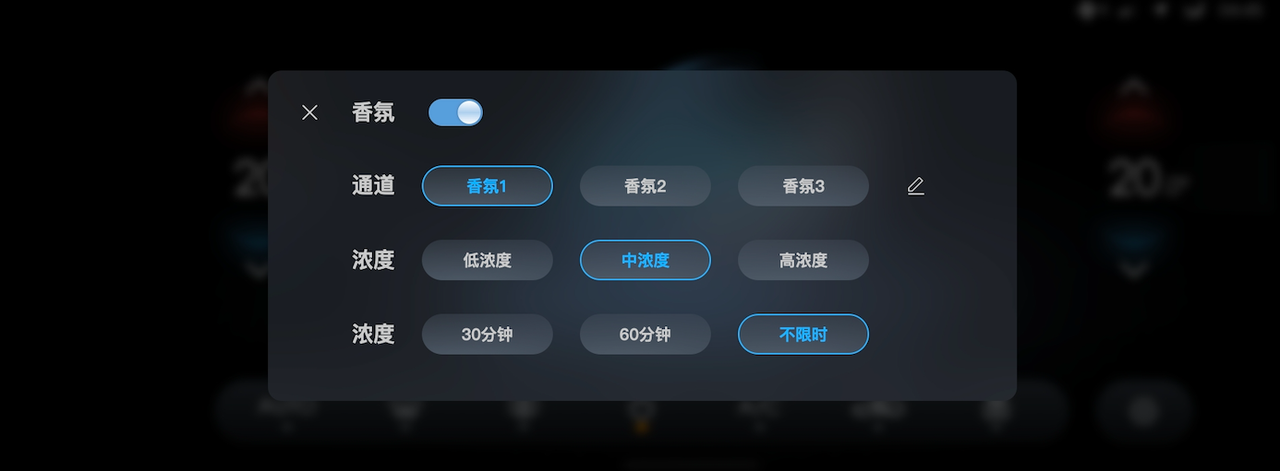
To solve the problem of rapid power consumption of new energy vehicles in low temperature, this upgrade changes the logic of battery preheating to reduce SOC loss in low temperature conditions, and increase the cruising range of the vehicle in low temperature conditions.
In terms of detail experience, the updated BluePrint FREE will automatically pop up multiple shortcut options such as opening the charging cap, opening the fuel cap, etc. when the user shifts the P gear to park, which saves manual switching. The addition of this feature is worthy of praise. When driving the LanTu FREE before, it took some effort to find the menu for opening the charging cap.
In terms of music sound quality selection, users can also choose to play APPs on the music playback interface, and select multiple versions of sound sources according to their own needs to obtain a high-quality sound experience.
In addition, with this OTA 2.0 upgrade, users can set seat heating, ventilation memory, driving position memory, etc., and the number of memory settings has increased, which can bring a more convenient user experience.
This OTA also adds instrument navigation distance turning function, which allows users to enable AR navigation. Virtual turning will prompt users of the turning distance ahead, which is more intuitive to use.
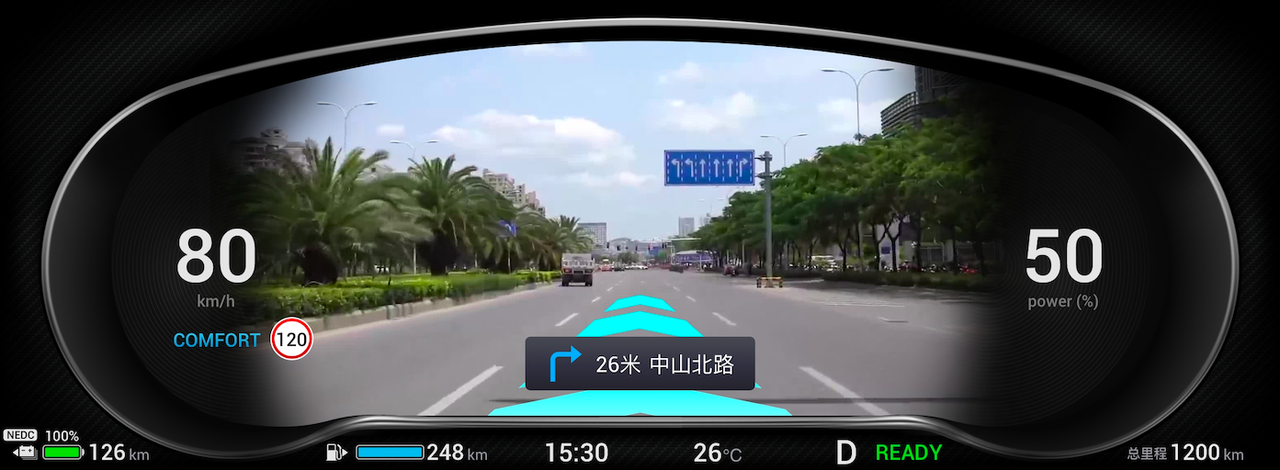 Overall, the latest update for the Voyah FREE is undeniably a “major version update”. Not only did it include a hard optimization to enhance battery life by changing the pre-heating logic for excessively low temperatures, but it also addressed pain points in user experience, such as the automatic pop-up of the reverse screen in the P gear. This also shows that Voyah has been considering how to balance functionality and user experience when upgrading.
Overall, the latest update for the Voyah FREE is undeniably a “major version update”. Not only did it include a hard optimization to enhance battery life by changing the pre-heating logic for excessively low temperatures, but it also addressed pain points in user experience, such as the automatic pop-up of the reverse screen in the P gear. This also shows that Voyah has been considering how to balance functionality and user experience when upgrading.
Now that we’ve covered the upgrade details, let’s talk about the driving experience on long journeys.
How is the long-distance driving experience?
The model version used for this drive is the Voyah FREE four-wheel drive pure electric version, and its specifications are probably familiar to everyone:
- Dual motor four-wheel drive layout, maximum power of 510 kW / 694 Ps, maximum torque of 1040 N·m;
- Acceleration time of 0 to 100 km/h in 4.7 seconds;
- 88 kWh battery pack, NEDC range of 470 kilometers;
- Double-wishbone suspension + air suspension.
Even in the crowded field of new cars in 2022, these specifications are still very impressive. Let’s start with what everyone is most interested in – range and charging.
Range and Charging
The NEDC range of 470 km is not particularly impressive by today’s standards, but it is understandable considering the 88 kWh battery pack and dual-motor four-wheel drive. Recently, Voyah also released the “Long Range Pure Electric Version”, which is equipped with a Ningde Times 106 kWh battery pack, and has a CLTC range of up to 631 km. For those who are interested in the Voyah FREE, the long-range version may be worth considering, as it is only RMB 20,000 more expensive than the 88 kWh version that I drove. Personally, I think this is quite reasonable.
After enjoying the happy National Day holiday, I departed from Anhui to Shanghai. Before departure, the vehicle battery was 98\% charged, and the displayed range was 286 km. However, this range was calculated based on the energy consumption level after charging, and the actual range should be around 300 km.
I drove a total distance of 370 km from my departure location in Anhui to Shanghai. As expected, I needed to charge once when approaching the destination. At the end of the first trip, I had driven about 250 km with only 17\% of the battery remaining, a range of 44 km, an average energy consumption rate of 27.9 kWh, and full luggage with a driver and a passenger. The displayed energy consumption calculation of the Voyah FREE is very accurate, which is very important for charging planning during long-distance trips.
Regarding charging, the Voyah FREE can achieve a power of about 77 kW on the 120 kW state grid charging pile. This power level is mainstream, but the advantage of the Voyah FREE lies in its sustainability. This power can continue until approximately SOC 80\%, which is also a highly efficient range frequently used. Converted, charging from 30\% to 80\% takes approximately 40 minutes.
Considering the launch time and power level of the vehicle, I think users who have higher requirements for endurance should choose the 106 kWh long-range version mentioned above. The new model not only has a higher battery capacity but also upgrades the motor from AC/asynchronous motor to permanent magnet/synchronous motor, providing better energy consumption control performance. In addition, the LanTu FREE also has an extended-range version, making its product line more abundant.
Driving experience
This long-distance test drive gave me a more detailed understanding of the dynamic performance of the LanTu FREE. Although the newly launched models are all piling up materials crazily on their chassis, such as air suspensions and double-wishbone suspensions, everyone should pay attention: tuning is more important than hardware.
The chassis tuning of the LanTu FREE belongs to the category that is very well-matched to its hardware. Even the models launched last year, their chassis performance can still be ranked in the forefront of SUVs in the same price range. At low speeds, this suspension is very decisive and flexible in filtering out manhole covers and speed bumps. At the same time, there is no abnormal swing or loose feeling of the vehicle, which is commonly known as “very consistent.”
At high speeds, this suspension is also very well-suited in filtering out fine-grained road conditions, providing a “floating sensation” driving experience. It is worth mentioning that the performance of the front and rear axles of this vehicle is very consistent. During high-speed lane changes and sharp turns, its response is very quick, and the driving experience can hardly tell the weight of 2 tons. I even regretted not finding a mountain road to push it during my holiday.
If I were to summarize the driving experience of the VOYAH Voyah FREE, I would say it’s “mature” and “substantial.” It is clear that Dongfeng, the parent company of VOYAH, has invested considerable effort into the tuning of the hardware, as the suspension system is clearly more refined than many cars at this price point, and the company seems to have more experience than newer automakers. In terms of the driving experience, the VOYAH Voyah FREE deserves high praise.
High Look-Away Rate and Adequate Space
Even by today’s standards, the VOYAH Voyah FREE has an impressive appearance. Here’s an interesting anecdote: in my hometown in Anhui, a third-tier city where the popularity of electric vehicles is not as high as in cities like Shanghai, the VOYAH Voyah FREE undoubtedly turns heads as it makes its way through the streets. I was even stopped by a ride-hail driver charging next to me who asked, “Brother, I’ve never seen this car before – it’s probably around 500,000 yuan, right?” This indicates that the appearance of the VOYAH Voyah FREE is certainly in line with its price point. The glowing logo on the front and the continuous light strip add to its already striking appearance, which is even more apparent at night.
The vertical lines on the grille, with their shark-like appearance, are one of the sources of the front’s domineering look. The brightness of the LED headlights is more than sufficient, and the VOYAH logo, which also appears in English as “VOYAH,” adds a touch of refinement to the design.
The overall design of the car follows the “luxury yacht” style, making the side view of the car look very stretched. The design of the long front of the car is becoming increasingly rare in today’s electric cars, and the entire side of the car presents a “lounging” visual sensation, complemented by chrome multi-spoke wheels and retractable door handles, creating a well-designed feel.
The LED light strip running through the tail widens the visual sensation, and the arrow wing design of the tail lights adds a personal atmosphere. The VOYAH English name replaces the car badge, which is also a common design in luxury cars.
The air suspension of the LanTu FREE can lift and lower to a large extent. When lowered to minimum, the gap is only 3 fingers wide. When raised to the highest, it can reach almost one and a half fists in distance. While ensuring handling, the LanTu FREE reaching its highest point can still have good passability.
When the suspension is lowered to the lowest position, the side profile of the Voyah FREE is even more “low-flying”, even with a slight sensation of being “jar-like”.
As for the interior, the adjustable dashboard remains a unique feature. Although “coolness” exceeds “practicality”, at this price point, adding some ceremonial sense is also understandable. Moreover, every friend who sits in my car is surprised by this cool little design.
What also surprises friends is the electrically controlled color-changing sunroof, which is the same as that used by Boeing. Through the central control, you can make the glass appear “hazy” or “transparent”, which also solves the problem of summer sun exposure through a large sunroof.
The front seats of the LanTu FREE are designed for 4-5 hours of long-distance driving without feeling pressure. The feel of the leather material is delicate and the support is strong enough. The floor is not very high, so the thigh support is quite good. Both the front and rear seats of the LanTu FREE have aviation headrests, which can manually adjust the packaging of the left and right wings. The driving perspective of this car is very good in the same level, you can clearly see the hood from the driver’s seat and have a feeling of driving a smaller car.
The layout of the spacious 5 seats in the back ensures ample space. I am 175 cm tall, and I can cross my legs when the front seats are adjusted to a comfortable position. With the decoration of ambient lights, there is a certain sense of atmosphere.
Translate the following Markdown Chinese text to English Markdown text in a professional way, keeping the HTML tags inside Markdown, and only outputting corrected and improved parts without explanations.
Finally, let’s talk about the trunk space. The trunk opening of the Landtourism FREE is low and large, and the depth inside is also very exaggerated. In order to reflect the loading capacity of the trunk, I specially invited a young lady to be the model:
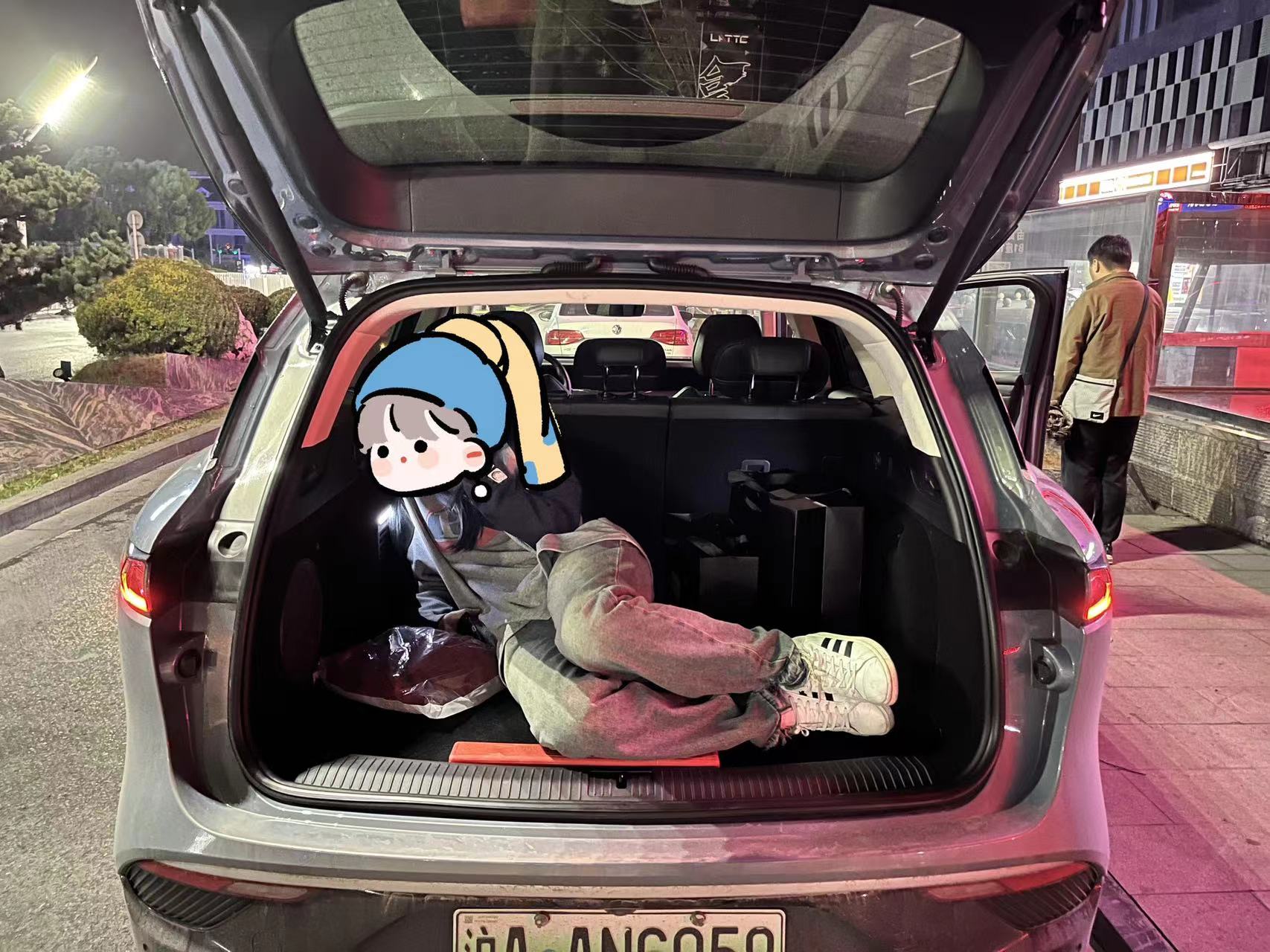
Of course, the daily load capacity is also excellent. When returning from my hometown in Anhui to Shanghai with full luggage, the large and small bags can be easily put into the trunk.
Final Thoughts
The chassis and handling performance of the Landtourism FREE are consistent with my first impression. It is a medium to large SUV that can balance handling and comfort. The mature chassis performance of the Landtourism FREE also left a deep impression on me.
A little regretful is that the range of the 88 kWh version I drove is slightly insufficient. However, the 106 kWh version is only 20,000 yuan more expensive, and according to the Landtourism policy, Shanghai users who purchase the Landtourism FREE in October can enjoy a limited-time 45,000 yuan purchase benefit.
Combined with end-of-term discounts, the Landtourism FREE has good value for money. As the brand’s first product, the Landtourism FREE undoubtedly has good completeness. And as time goes by, Landtourism’s third product, a medium to large sedan called Zhui Guang, is about to be launched.
With the anticipation created by the LanTu FREE, I am also looking forward to this upcoming new product.
This article is a translation by ChatGPT of a Chinese report from 42HOW. If you have any questions about it, please email bd@42how.com.
